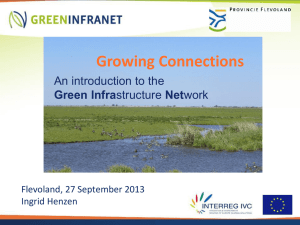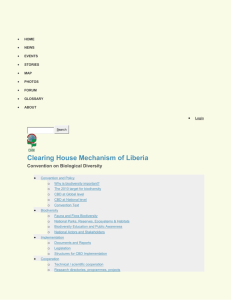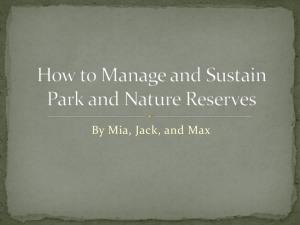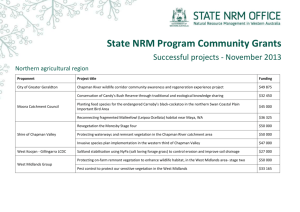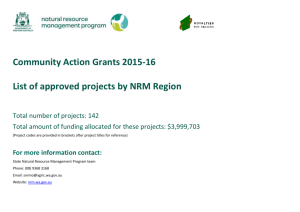Ryde-Hunters Hill Flora and Fauna Preservation Society - C
advertisement
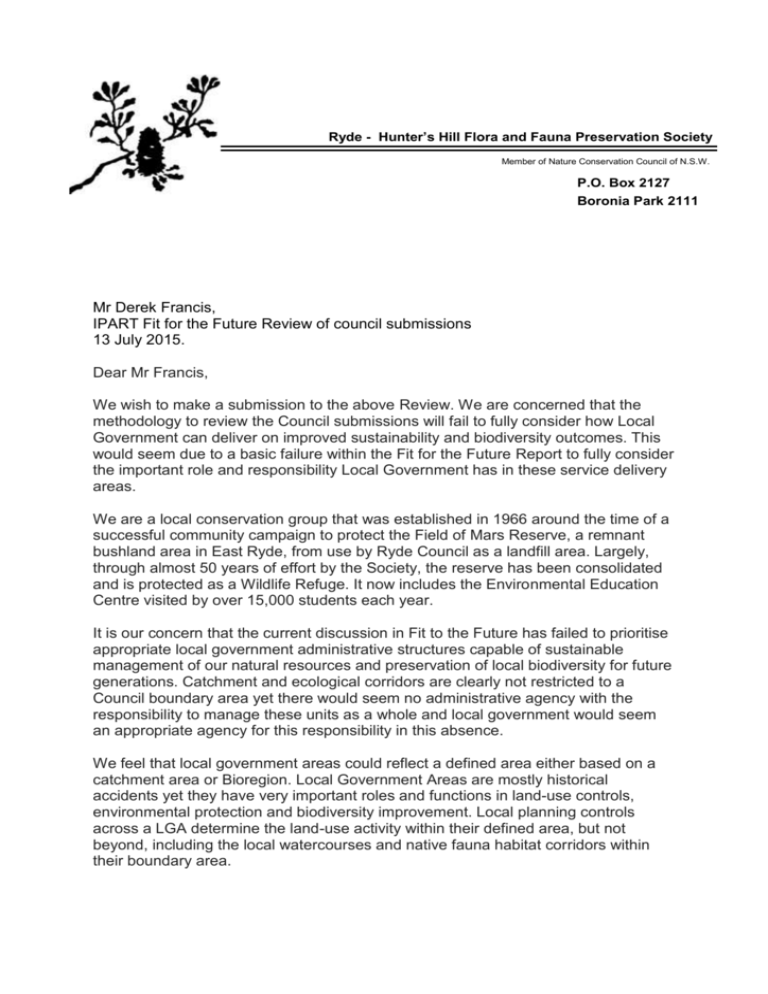
Ryde - Hunter’s Hill Flora and Fauna Preservation Society Member of Nature Conservation Council of N.S.W. P.O. Box 2127 Boronia Park 2111 Mr Derek Francis, IPART Fit for the Future Review of council submissions 13 July 2015. Dear Mr Francis, We wish to make a submission to the above Review. We are concerned that the methodology to review the Council submissions will fail to fully consider how Local Government can deliver on improved sustainability and biodiversity outcomes. This would seem due to a basic failure within the Fit for the Future Report to fully consider the important role and responsibility Local Government has in these service delivery areas. We are a local conservation group that was established in 1966 around the time of a successful community campaign to protect the Field of Mars Reserve, a remnant bushland area in East Ryde, from use by Ryde Council as a landfill area. Largely, through almost 50 years of effort by the Society, the reserve has been consolidated and is protected as a Wildlife Refuge. It now includes the Environmental Education Centre visited by over 15,000 students each year. It is our concern that the current discussion in Fit to the Future has failed to prioritise appropriate local government administrative structures capable of sustainable management of our natural resources and preservation of local biodiversity for future generations. Catchment and ecological corridors are clearly not restricted to a Council boundary area yet there would seem no administrative agency with the responsibility to manage these units as a whole and local government would seem an appropriate agency for this responsibility in this absence. We feel that local government areas could reflect a defined area either based on a catchment area or Bioregion. Local Government Areas are mostly historical accidents yet they have very important roles and functions in land-use controls, environmental protection and biodiversity improvement. Local planning controls across a LGA determine the land-use activity within their defined area, but not beyond, including the local watercourses and native fauna habitat corridors within their boundary area. Whilst collaboration with adjoining Councils is an important part of Council processes, any plans or agreements developed do not necessarily have any statutory weight. Often these very well considered plans and strategies are dismissed in the environmental planning assessment processes. The cumulative impact of what is perceived as minor isolated points of damage can result overall in serious destruction of habitat corridors and biodiversity quality. The insidious nature of the incremental damage to our local biodiversity is concerning. It is not always possible to capture cumulative impacts in local planning controls because of the limited area that a Council’s planning controls can be applied adjoining Councils in a catchment may not have consistent controls and approaches in their environmental planning and assessment process. This incremental damage takes the form of loss of small patches of bushland, increased nutrient loads reaching our urban watercourses, canopy gaps from mature tree removal, destruction of breeding habitat areas, impacts of a changing climate and opportunistic weed invasion. Without overarching legally binding plans to consistently guide priorities and monitor environmental improvement across a range of activities within a whole catchment or bioregion there may be no real improvement in water and air quality, biodiversity etc. The Society expressed its disappointment and concerns when the Catchment Management Authorities were dissolved and there was an amalgamation of services in the formation of the Local Land Services. The previous CMAs had undertaken significant work across NSW in the preparation of strategic plans and Catchment Action Plans. These documents contained very valuable information about the status of the catchment’s biodiversity and potential threats to it. In particular the corridor mapping prepared by the Sydney Catchment CMA is an extremely valuable document if we are to ensure that ecological corridors are recognised, protected and appropriately managed within the Sydney Basin. It is our understanding that these maps were never properly adopted and linked to local planning controls as a biodiversity mapping layer. Whilst threatened species may be entered on the NSW Wildlife Atlas, endangered ecological communities are not recognised and there is no assurance that the integrity and quality of these important corridors will be protected. Overall, biodiversity is lost but in the absence of good corridor mapping linked strongly to local planning controls, combined with scientific monitoring overtime, it is impossible to know how much is lost and how best to target restoration efforts. We feel strongly that any changes made to Local Government must consider how proposed new structures can ensure sustainable use of our finite resources and deliver on the ground improvement to our natural environment. There needs to be capacity for legally binding controls which can apply across Council areas within whole catchments and Bioregions. We feel this could be achieved by either reviewing Council boundary areas to reflect a defined natural resource area or in the introduction of prescriptive legislative requirements for cross Council collaboration in the development of catchment and biodiversity plans. These final plans must identify priority areas, set targets, identify potential threats and gaps in habitat corridors and be reviewed regularly. Informed and targeted effort is especially important as a changing climate starts to impact on local biodiversity. At this stage it is somewhat unknown how our urban bushland will respond but this needs to be properly evaluated and monitored. Community participation and contribution is critical in the development of strategic plans which aim to sustainably manage our resources and preserve precious biodiversity. Consistent and transparent mechanisms are required, especially for plans which capture a larger geographical area than current LGAs as we have suggested. Meaningful community engagement and representation could be achieved with the establishment of defined precinct areas within local communities. The precinct model allows local knowledge and values to be captured as overarching plans are progressed and reviewed. Sustainable use of resources and the protection of biodiversity is a major priority of local conservation groups such as our Society. We do not feel that there has been due consideration of these important matters in the current government direction towards local government reform. These reforms we feel are unreasonably weighted towards economic considerations rather than social and environmental considerations. Economic arguments have also driven other recent legislative reform agendas such as planning, local government and crown land legislation. All of these pieces of legislation are critically linked to any changes to the size and administrative structure of Councils themselves. At the core of all these reforms we feel is the need to properly reflect the established principles of ecologically sustainable development so as to ensure sustainability and biodiversity protection is recognised as important responsibilities of the local Council. Thank you for an opportunity to comment. Yours sincerely Cathy Merchant President.




